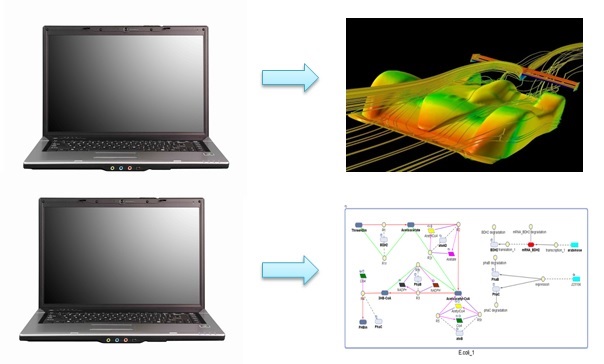Team:Imperial College/Modelling Intro
From 2013.igem.org
Contents |
Introduction to modelling
Modelling plays an important role in synthetic biology as it allows engineering principles to be integrated in the process of designing genetic circuits. It also enables scientists and engineers to quantitatively and qualitatively predict the behaviour of the system that they are designing. With this level of prediction, we can gain a more thorough understanding of our engineered systems that cannot otherwise be achieved in conventional genetic engineering.
Traditional engineering disciplines (electrical and mechanical) have evolved from a trial-and-error and primitive way to solve problems to an art in which we can predict, simulate and optimise the performance of the created machines, hence advanced aircrafts and electronics. From an engineering perspective, an engineered organism can be considered as a machine – it is something that has been synthetically built and designed to perform a desired function(s). Therefore, this adds a whole new perspective to the field of genetic engineering and makes it more like a traditional engineering field.
Furthermore, the fact that modelling can help us gain an insight into the behaviour of our systems also masks the biological complexity at the same time; this fits in particularly well with the themes of abstraction and standardisation in synthetic biology and we decided to take advantage of this aspect in our iGEM project. In particular, we implemented a model-guided design process by testing how to optimise the production of bioplastic (P(3HB)) through simulating our software model. Our model has guided the scientists of the team to modify their wet-lab experiments and optimise our plastic-synthesising organism.
Software
Simbiology is a MATLAB toolbox that we decided to utilise for the design and simulation of our models. It was chosen because it has a command-line interface with the MATLAB language – it is a language familiar to engineers and also means that the simulations can be done programmatically. The software package also provides a graphical and interactive environment for the modellers to better visualise how the genetic circuits and biological pathways are linked to each other. Also, it can import and export files in the SBML (systems biology markup language) format which is a format in computational modelling of biological processes.[3]
Strategy
References
- http://image.made-in-china.com/2f0j00AMwQVHDKrtbe/Laptop-HT520-.jpg/
- http://1.bp.blogspot.com/_XH1Kh5a0dFA/TI2lQiCDBwI/AAAAAAAAAKc/A1X5SmhUX20/s1600/car-aerodynamics.jpg/
- http://sbml.org/Documents/FAQ#What_is_SBML.3F/
 "
"




